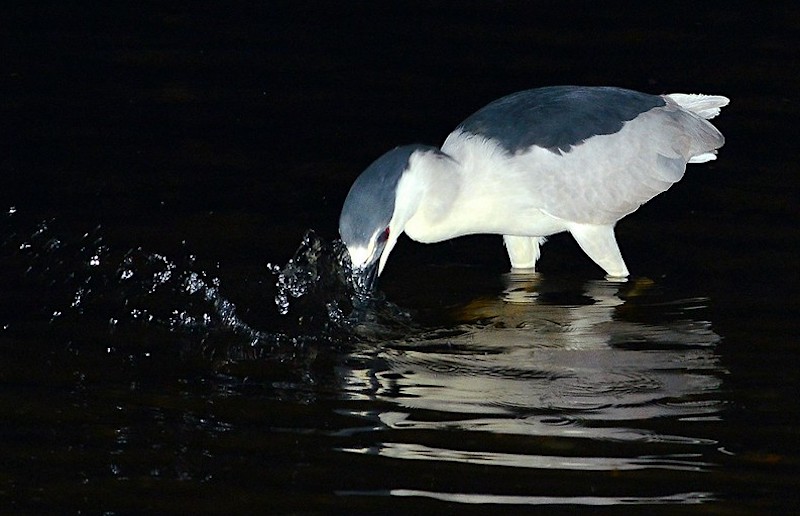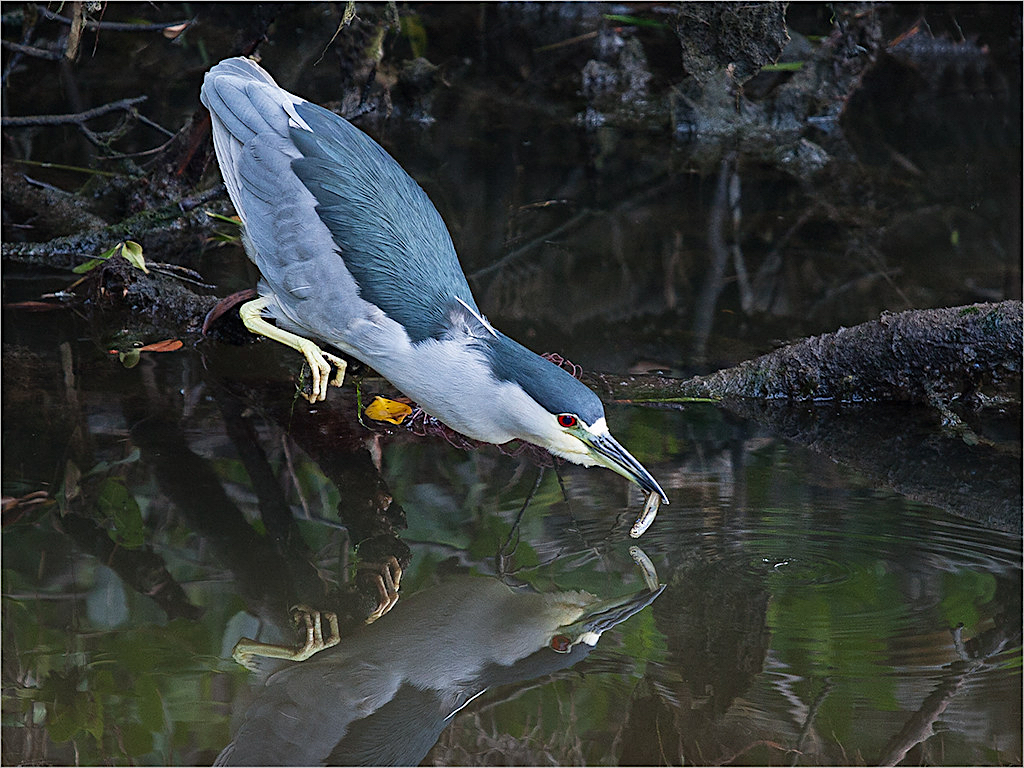BY KIERAN LINDSEY, PhD
Strolling through Lafayette Park early one evening, I took note of the usual suspects distributed along the edge of the centerpiece man-made lake as they waited patiently for red-and-white bobbers to disappear below the surface. The fisher-folk are a common fixture here — the reservoir is stocked by the Missouri Department of Conservation (MDC) every two to four weeks specifically to support this recreational activity — but one angler, perched on the concrete bank, was a new face in the crowd.
That unfamiliar face was capped with a jaunty jet-colored glengarry, accented with several long white plumes for an added splash of brio. Some might deem that lid overly formal, given the casual nature of the enterprise, but this was a Black-Crowned Night Heron (BCNH, Nycticorax nycticorax) trolling for a meal. That’s the standard sporting attire of this clan, as is his* slate-and-charcoal blazer and silver westkit.
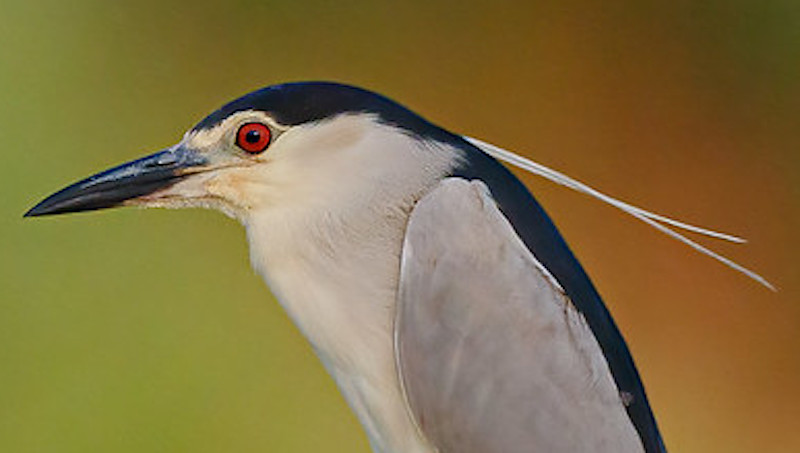
Combined with bright vermilion eyes and saffron leggings, the ensemble gave an air of upper-crust respectability, not to mention fashion-forward quirkiness, to this short, stocky, round-shouldered chap. Short (23-26 in or 58-66 cm), that is, compared to his leggier cousins the great egret and the great blue heron, who stand 1 or 2 feet taller, respectively. There are also more diminutive members of the Ardeidae Family, and truth be told, night herons looks a lot more lanky, and their posture more imposing, once they stand up to stretch and straighten out the kink in their neck.
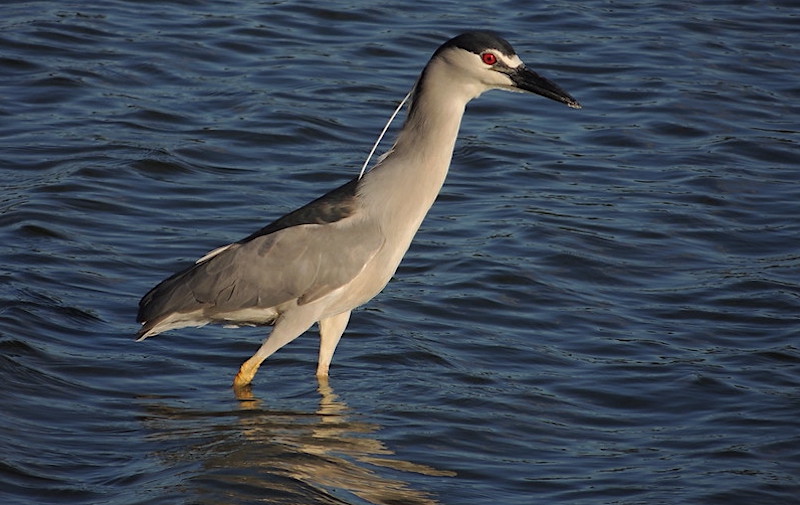
This feathered fellow may be a sartorial standout at the lake but but he has more in common with the people wetting a line and hoping for a bite than you might assume. Most wading birds (and some humans, it must be said) use the “stand still and stab” approach preferred by those who fish with spears, regardless of whether the skewer is hand-held or conveniently integrated into one’s face.
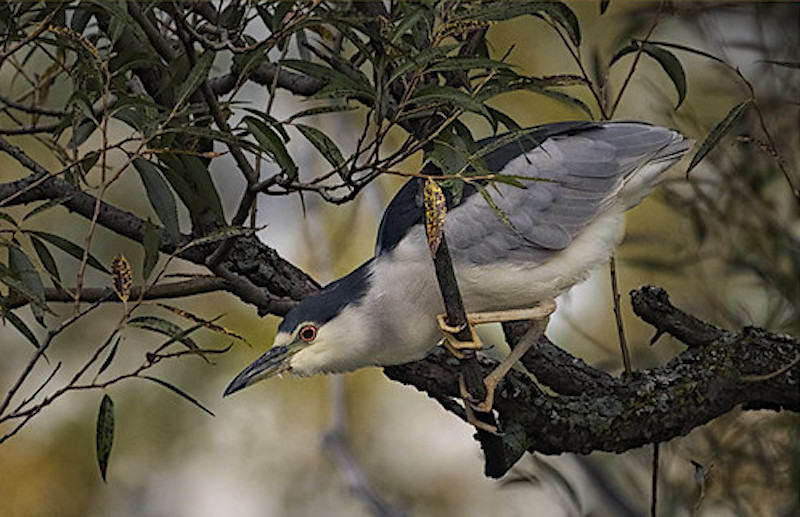
True, Black-Crowned Night Herons are skilled in this method, too, but they (and some of their kin) have another weapon in their arsena.
Over the past several decades, researchers have observed BCNHs manipulating and placing edible (bait) or inedible (lure) items, such as bread, dead insects, or leaf and twig fragments, on the water surface within the birds’ striking range, or even dangling worms and minnows below the surface, to attract potential prey. This behavior, called active bait fishing or baiting is a learned or culturally transmitted behavior, and it is officially classified as a form of tool use.
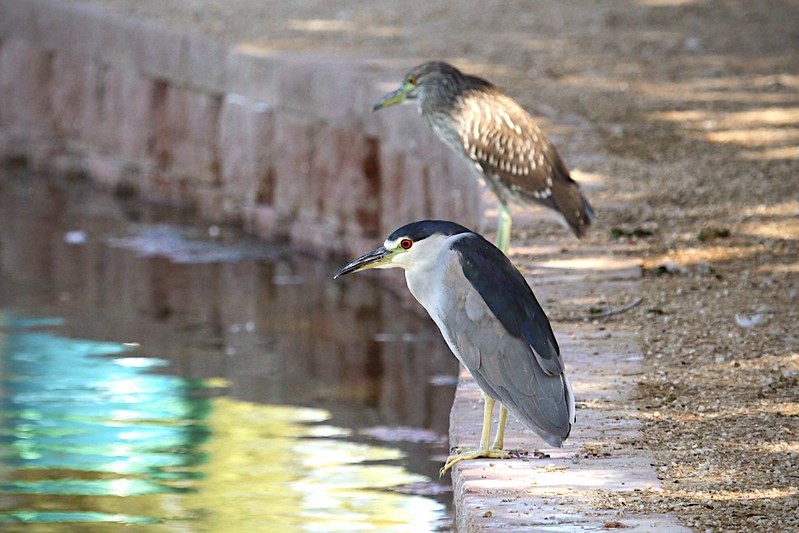
Now, humans have a long history of trying to set themselves apart from the rest of the Animal Kingdom, for reasons I have never fully grasped. Regardless, over the centuries people have pointed to characteristics initially asserted to be uniquely ours, but that subsequently turned out to be either very hard to prove, such as consciousness and free moral agency, or quite easy to disprove, such as language or the creation and use of tools.
In fact, tool use was one of the first assumed distinctions of our species to be discredited. You see, what makes an object a tool is how it is used, not who is using it. When that realization dawned on the scientific community, it became impossible to dispute that humans are not the only creatures who, for example, can transform a rock into a hammer or an anvil by picking it up and pounding a shellfish to prepare oysters on the half-shell.
Suddenly, it was as if humanity had been fitted with corrective lenses. The big picture snapped into focus — people have plenty of tool-using company. Our early ancestors may have even learned to make and use tools by watching their non-human neighbors, and not just other primates (e.g., bonobos, gorillas, orangutans, macaques), or mammals more generally (such as bottlenose dolphins, elephants, and sea otters).
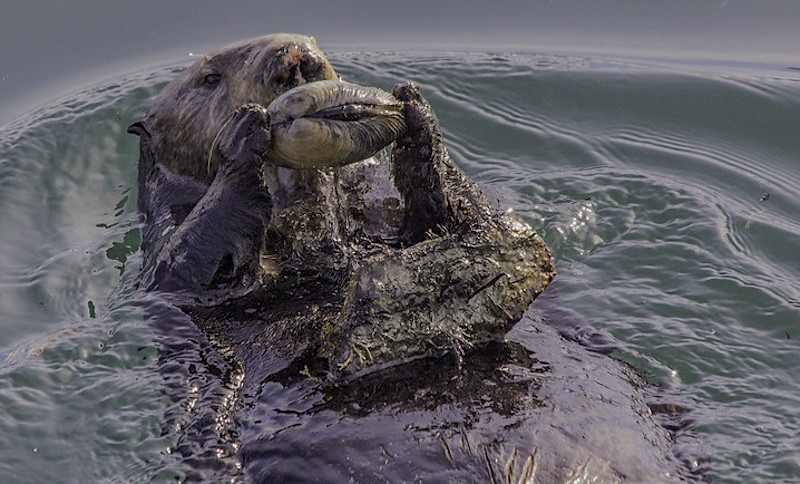
Another trick in the BCNH’s creel is hinted at by the species’ common and Latin name. Nycticorax comes from the Ancient Greek words nuktos (night), referencing their habit of feeding primarily from dusk until long after the sun has dropped below the western horizon.
Like many of their tool-wielding human brethren — the factory workers, emergency responders, janitors, and newspaper printing press operators — BCNHs are the wading bird night shift. Their day begins just as much of the world is powering down and turning in.
There’s something to be said, though, for the hushed solitude of a fresh, brackish, or saltwater wetland, or a lake in a historic city park, under cover of darkness. Stars bouncing an infinite, twinkling Morse code from deep space to shallow waters and back again, the rising moon’s reflection sweeping across the surface like a spotlight. Without all the bustle and distractions of daylight hours, a workman can fix his attention on his tools, and the task at hand (or beak).
And it certainly doesn’t hurt that fishing at odd hours means less competition from other anglers.
